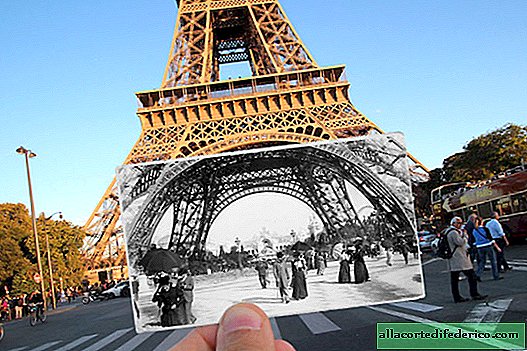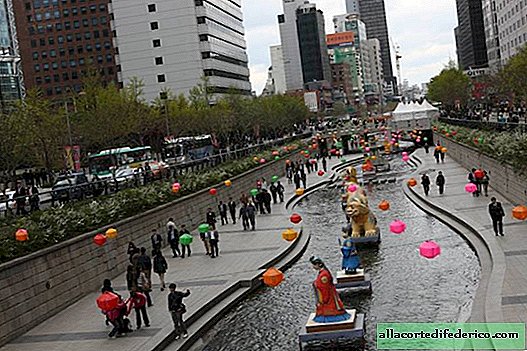How women fought the tan, and why he won
Summer is coming, the vacation season, and many of us will stretch in orderly rows to the sea, to the beach for a bronze tan. But there were times in the history of mankind when people tried to get rid of tanning in all available ways.
Aristocratic pallor was the standard of beauty. In ancient Greece and ancient Egypt, with the help of lead they tried to whiten the skin. Its color was important - he talked about the social status of a person, his belonging to a certain race. The light shade meant that the woman did not have to engage in agricultural work in the fresh air.

Ancient Egyptian women should be lighter than men. This was a sign of youth, beauty, health. In addition, it was believed that a pale woman is more prolific. For the whitening of the skin, the ancient Greeks, for example, used special powder, which included lead carbonate. This was written in detail by the Greek scientist Theophrastus in the treatise "On the stones." During archaeological excavations of tombs, scientists discovered the remains of this substance.
White skin was worshiped not only in Europe but also in the East. It was in Japan that they learned to create cosmetics that do not cause damage to health.

The powder was made from rice and pearls. And the Chinese ruler Wu Zetian (624-705), the first woman emperor of China, used anti-aging and tonic creams. Alas, their exact composition did not reach our time. In addition, from the chronicles it is known that the ruler devoted much time to relaxing exercises and meditation. She had lovers until her death. And she lived 81 years.
The beauty of happiness did not bring other Chinese beauty. Her name was Jade Ring - Yang Yuhuan. She was a favorite of Emperor Xuan Zong. Jan was famous for her snow-white skin. For beauty, she used lychee - Chinese plum. Special messengers brought her from the southern provinces. She made her mask of tincture. The fruit of Chinese plum is rich in vitamins C and B, as well as phosphorus and iron. The girl led a wasteful life. In the end, this led to discontent. An angry people killed all of her relatives. The emperor was forced to send her a symbolic silk scarf, on which she hung herself.

The whiteness of the face was watched not only by the Chinese empresses, but also by Japanese geisha. Using rice broth and rice flour, they polished the skin. Rice inhibits the production of melanin, and the skin becomes more white, delicate, almost porcelain.
Geisha advised to be friends with a mirror. It could tell a lot about a person. For example, if you look at him with your chin up, you will see yourself as he was ten years ago. If you lower your chin down, then a person will see what he will be like in ten years. If you don’t like the reflection, you need to urgently take action.
The desire for white skin from ancient times passed into the Middle Ages. Tanning was still a sign of the lower classes. In Christian Europe, a new standard of beauty - the Virgin Mary. Cosmetics made using toxic substances did their destructive business. In women, hair fell out, teeth were destroyed, lung disease developed. Since medicine did not associate these symptoms with lead, women continued to die.
During the Renaissance, other components began to be used for skin whitening - eggs, herbs, ammonia, arsenic and mercury. Fashion was dictated by Venice. Special whitewash appeared in which there was such a quantity of lead that the skin acquired a satin shade. But as soon as the aristocrats went out into the street, under the influence of the sun, everything dried up, the face wrinkled. The skin condition worsened. Women applied a new portion of white. It was very beneficial to merchants. Mercury and arsenic eliminated freckles well. Especially such a mixture was used by Catherine de Medici (1519-1589) and Queen of England Elizabeth I (1533-1603).
 Portrait of Catherine de Medici
Portrait of Catherine de MediciIf you look at the portraits of aristocrats of the 18th century, you can see that the whitewash on the face is applied in several layers. On them, ladies painted moles, blue veins, symbolizing the transparency of the skin.
Lead white was very expensive, so ordinary women had to use cheap, affordable methods to achieve beauty - a mixture of peas, chickpeas, nuts. It is worth noting that their skin looked more natural and healthy.
 Frame from the film "Marie Antoinette"
Frame from the film "Marie Antoinette"Attitudes towards whiteness began to change during the industrial revolution. When the working class left the fields for towns and factories, tanning ceased to be a sign of the lower class. The rich gradually began to lose interest in pallor.
In the late 19th century, people drew attention to the health benefits of sunlight. One of the first to do this was the Scottish medicine preacher Theobald Palm. In 1890, he revealed the role of sunlight in preventing rickets. Many doctors have long ignored this fact. Swiss doctor Auguste Rollier introduced sun baths for the first time. He opened the first tanning salons in his sanatorium in 1903. Later, his successful experience spread throughout Switzerland and then Europe. Resorts became more and more popular. To spread the tan fashion, the French Riviera has done a lot. Wealthy people rested there, and a tan became a sign of prosperity and prosperity.
 Coco Chanel
Coco ChanelWhen Coco Chanel returned from a Mediterranean cruise in 1923, she looked like a bronze figurine. From this moment on, tanning has become a must-have fashion accessory. For residents of northern latitudes, a bronze tan was the ultimate dream. Nowadays it’s enough to catch a plane and in a few hours you can bask in the gentle sea. But it must be remembered that excessive exposure to ultraviolet radiation can lead to skin diseases.

















